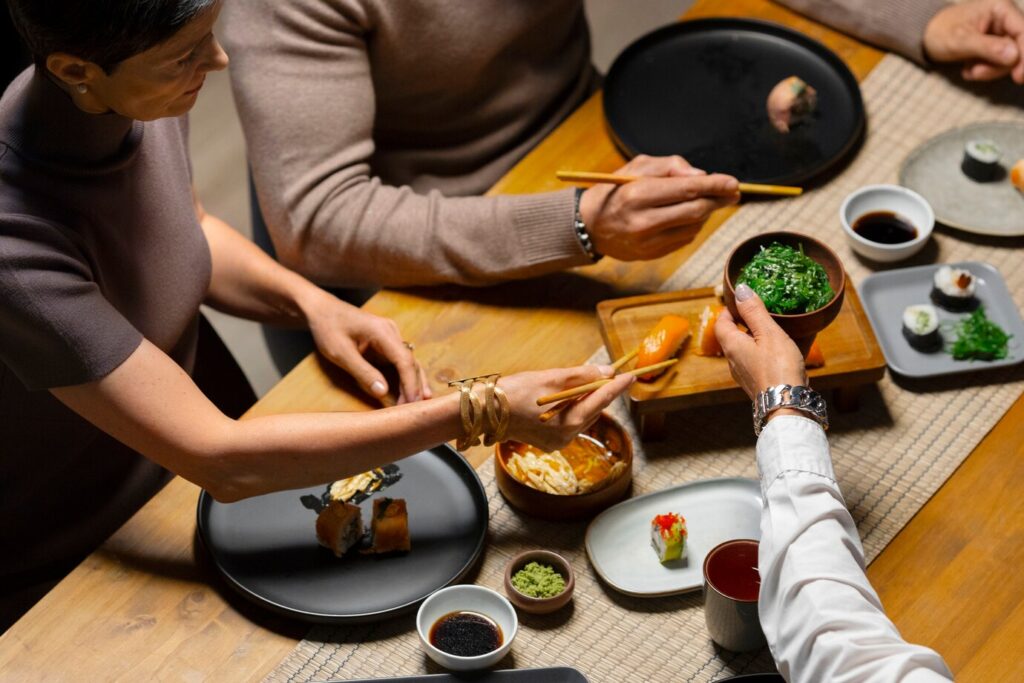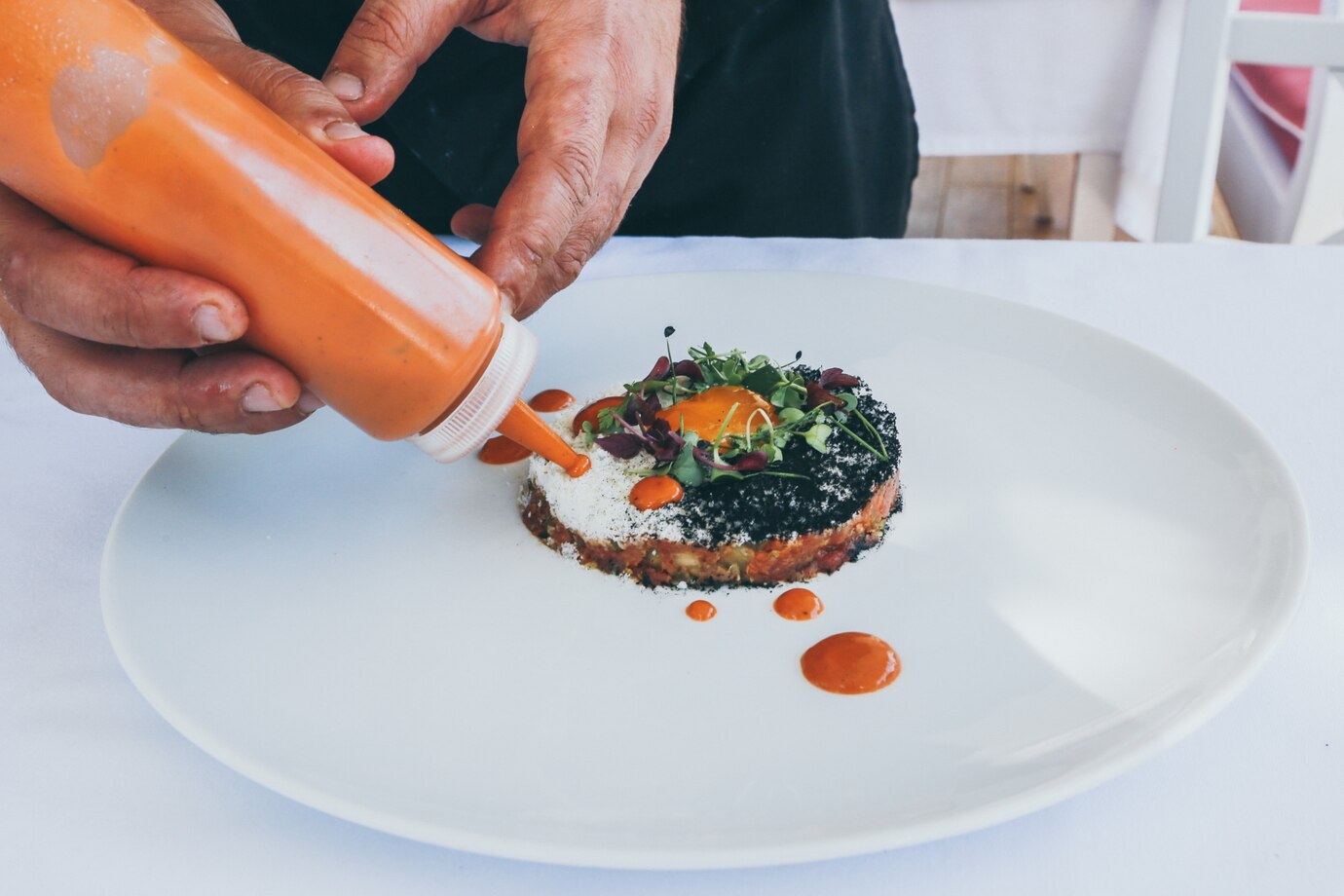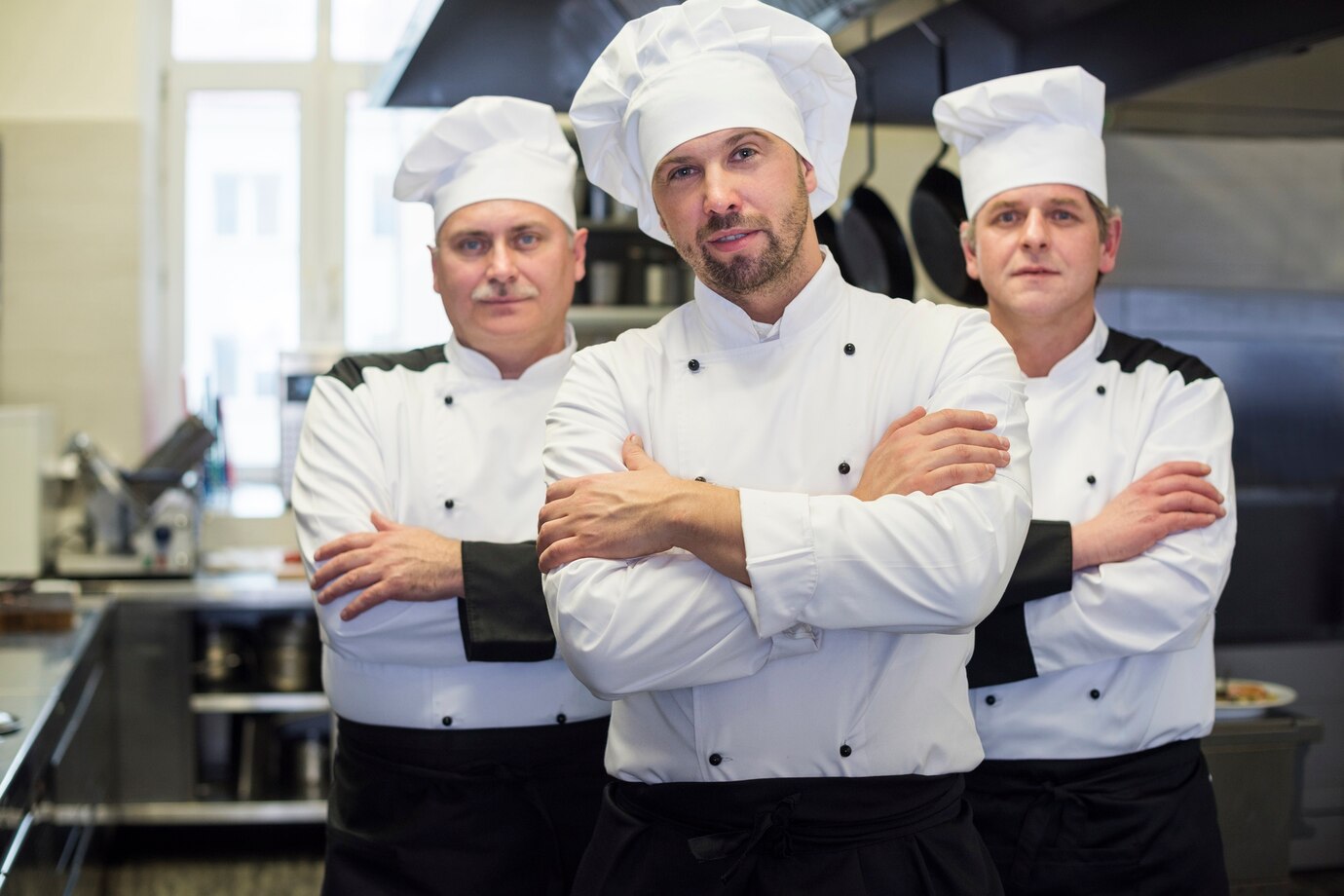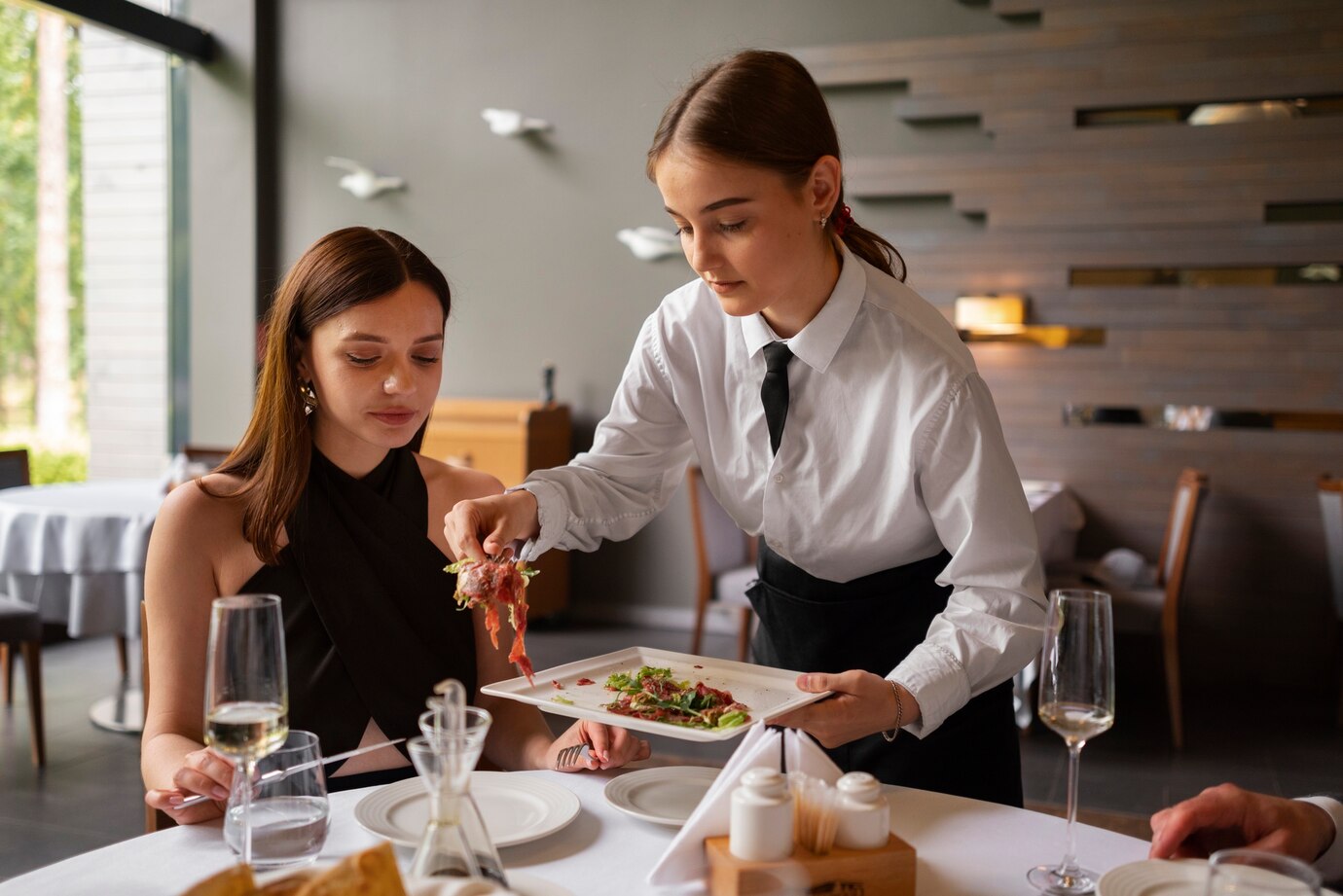The Food Blog

How High-End Restaurants Are Redefining Traditional Dishes
Pero some high-end restaurants have taken traditional dishes and turning them into spectacular culinary experiences. Using innovative techniques, high-end ingredients and artful presentation, chefs are reinventing old favourites. Be it a deconstructed shepherd’s pie, truffle-laden ramen or tapas reimagined through the lens of molecular gastronomy, these iterations make comfort food feel gourmet.
In this guide, you’ll explore how fine dining establishments are redefining traditional dishes through innovation, creativity, and precision, offering diners a new appreciation for timeless recipes.
Why Are High-End Restaurants Redefining Traditional Dishes?
1. The Demand for Culinary Innovation
Modern diners crave novelty and uniqueness, even when it comes to familiar dishes. The growing popularity of tasting menus and experimental cuisine has driven chefs to push the boundaries of tradition.
2. Reviving Heritage Dishes
High-end restaurants often reimagine heritage recipes, making them relevant for contemporary palates while preserving their cultural significance. This approach pays homage to culinary roots while adding a refined, modern twist.
3. The Rise of Food as Art

In fine dining, food is not just nourishment—it is an artistic expression. Chefs use modern plating, molecular gastronomy, and creative ingredient mixes. They transform traditional dishes into exciting, multi-sensory experiences.
Example: A classic French onion soup, traditionally a rustic dish, may be transformed into a gelée sphere topped with cheese foam, offering all the familiar flavours in an innovative form.
Techniques Used to Reinvent Traditional Dishes
1. Deconstruction and Reconstruction
A popular fine dining trend is deconstruction. Chefs take a traditional dish and break it down into its core elements. Then, they reassemble it in a creative and eye-catching way.
Examples of Deconstructed Dishes:
- Deconstructed Tacos: This dish swaps the tortilla shell for taco-flavored foam. It includes crisp tortilla chips and neatly arranged fillings served on the side.
- Deconstructed Caprese Salad: Enjoy tomato consommé, basil oil, and mozzarella foam. Each element is served separately, giving you fresh flavours in new textures.
- Deconstructed Apple Pie: Apple gel, spiced crumble, and caramel foam plated individually, allowing diners to experience each flavour separately or together.
Why It Works: Deconstruction creates a playful and interactive dining experience, encouraging diners to explore familiar flavours in a fresh way.
2. Molecular Gastronomy
Molecular gastronomy combines scientific techniques with culinary art to transform the textures and forms of traditional dishes. Chefs use liquid nitrogen, spherification, and foams to create surprising effects.
Examples of Molecular Gastronomy Twists:
- Spaghetti Bolognese Spheres: The meat sauce is encapsulated into flavour-packed spheres that burst in the mouth.
- Liquid Ravioli: Traditional pasta fillings are transformed into gelled spheres that resemble caviar.
- Frozen Olive Oil Powder: Olive oil is flash-frozen into a fine powder using liquid nitrogen, offering a new texture to complement salads.
Why It Works: These techniques add fun textures and surprises. They make classic dishes feel new and exciting.
3. Fusion of Culinary Traditions
Many high-end restaurants blend traditional recipes with global influences, creating fusion dishes that combine techniques, ingredients, and flavours from different cuisines.
Examples of Fusion-Inspired Traditional Dishes:
- Ramen Carbonara: A blend of Japanese ramen and Italian carbonara featuring a creamy Parmesan broth, egg yolk, and pancetta.
- Korean BBQ Tacos: Tender, slow-cooked Korean beef wrapped in handmade tortillas. Topped with kimchi slaw and spicy gochujang sauce.
- Foie Gras Sushi: This dish combines French and Japanese cooking styles, boosting classic sushi with a slice of seared foie gras.
Why It Works: Fusion cuisine mixes bold flavours. It adds surprises and creates new twists on familiar dishes.
4. Premium Ingredients and Flavour Enhancements
High-end restaurants often elevate classic dishes. They add luxury ingredients and use refined cooking methods.
Examples of Ingredient Upgrades:
- Truffle-Infused Mac & Cheese: The classic comfort dish is elevated with fresh truffle shavings and aged Gruyère.
- Lobster Grilled Cheese: The familiar sandwich is transformed into a fine dining dish by adding buttery lobster meat and aged cheddar.
- Gold-Leaf Pizza: Traditional Neapolitan pizza elevated with gold leaf, caviar, and edible flowers.
Why It Works: Premium ingredients bring richness and depth. They also add a touch of exclusivity, making traditional dishes feel luxurious.
5. Artful Presentation
In fine dining, presentation is everything. Even the simplest dishes are meticulously plated with artistic flair, turning them into visual masterpieces.
Techniques Used for Presentation:
- Minimalist Plating: Dishes arranged with geometric precision and negative space for visual elegance.
- Edible Garnishes: Flowers, microgreens, and delicate herbs add colour and texture.
- Custom Tableware: Unique and unconventional plates, bowls, and serving vessels enhance the presentation.
Why It Works: Artistic presentation makes classic dishes look amazing. This boosts the whole dining experience.
Famous Michelin-Starred Chefs Redefining Traditional Dishes

1. Heston Blumenthal – The Fat Duck (UK)
Heston Blumenthal is renowned for using molecular gastronomy to reinvent traditional British cuisine.
- Signature Dish: “Meat Fruit” – A chicken liver parfait crafted to resemble a perfectly ripe mandarin.
- Technique: The illusionary presentation surprises diners, offering familiar flavours in a playful form.
2. Massimo Bottura – Osteria Francescana (Italy)
Massimo Bottura’s restaurant is celebrated for its innovative reinterpretations of Italian classics.
- Signature Dish: “Oops! “I Dropped the Lemon Tart” – This dessert looks like a splatter, showing that culinary mistakes can be art.
- Technique: The playful deconstruction enhances the dish’s visual appeal and taste complexity.
3. Dominique Crenn – Atelier Crenn (USA)
Dominique Crenn mixes poetry with food. She turns classic French dishes into beautiful, artistic creations.
- Signature Dish: “La Mer” – A seafood dish presented as an abstract painting, using purées and foams to create oceanic textures.
- Technique: Abstract plating and subtle flavour layering create a multi-sensory experience.
Why Redefined Traditional Dishes Appeal to Modern Diners
1. Elevated Nostalgia
By transforming familiar dishes, chefs tap into nostalgia while offering a refined twist, creating an emotional connection for diners.
2. Culinary Adventure
The surprising shapes, textures, and flavours make dining an adventure. It’s both memorable and perfect for Instagram.
3. Exclusivity and Luxury
Fine dining restaurants often use rare, premium ingredients. This gives dishes a special and luxurious feel, even if they are simple classics.
High-End Dining

Modern haute cuisine changes how we enjoy classic foods. It uses creative presentation, scientific techniques, and elevated ingredients. Everyday recipes become art on a plate. Deconstruction, molecular gastronomy, and creative fusion offer exciting ways to taste familiar flavours.
Experience the best of culinary art for food lovers. Discover traditional dishes reimagined.









